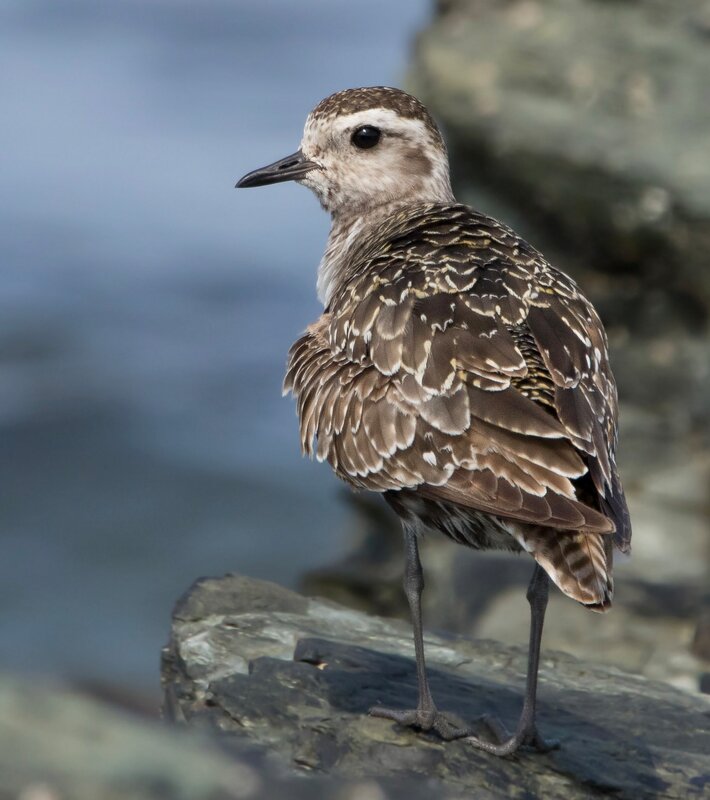|
It’s the best time of the year to watch waders, or shorebirds as they’re known in some parts of the world. Breeding wader populations in much of western Europe have fallen dramatically for a variety of reasons, including the expansion of upland forestry and changes in farming policies and practice over the last century. Dunlin and Golden Plover are, sadly, now rare breeding birds in Wales, and Curlew, Lapwing and Redshank are far less widespread than formerly. September sees adult and young waders of many species stop in North Wales from northern Europe, Asia and the far northeast of Canada.
Cemlyn, on the north coast of Anglesey, took the prize for rare waders this week. An American Golden Plover has been present since last Wednesday and a Buff-breasted Sandpiper dropped in at the weekend, both having crossed the Atlantic. A White-winged Black Tern, from eastern Europe, shared the Cemlyn limelight on Sunday. Other waders hail from the northeast, having already flown at least 2500 miles in recent weeks. A Pectoral Sandpiper at RSPB Burton Mere Wetlands most likely came from that direction, in the Siberian Arctic, as do the Curlew Sandpipers and many of the Little Stints encountered here in autumn. Their journey is far from over. North Wales is just the halfway mark en route to west Africa. Curlew Sandpipers are being seen across the region, with counts of 12 on the Alaw estuary and the Border Pool at RSPB Burton Mere Wetlands, nine at Malltraeth Cob, five on the Clwyd estuary, three on Porthmadog’s Llyn Bach and Connah’s Quay nature reserve, and singles at Aberdyfi and RSPB Conwy. Very unusually, one was on the shore of Llyn Aled Isaf, in Mynydd Hiraethog, illustrating that at some least travel overland. Little Stints have come too, with three each at Malltraeth and RSPB Conwy, where a couple of Spotted Redshanks and Ruff are present. Other notable visitors to the region in the last week include a Marsh Warbler ringed on Bardsey, three Balearic Shearwaters off the island, a Cory’s Shearwater off Point Lynas, Cattle Egret and a juvenile Cuckoo at RSPB Cors Ddyga, and another at Cemlyn on Monday. Three Garganeys were on Cefni reservoir and one on the Alaw estuary. I was delighted to try out the updated BirdTrack mobile phone app at the weekend, with new features that make it even easier to enter bird sightings in the field. Records of other popular wildlife groups, including mammals, butterflies and dragonflies, can now be added too. Bird recorders in Wales and the Welsh Ornithological Society draw on sightings submitted through BirdTrack, so it’s the one-stop-shop to ensure sightings count. If you already use BirdTrack, head for your phone’s appstore, and if you haven’t tried out BirdTrack yet, register first at www.birdtrack.net.
0 Comments
Leave a Reply. |
Bird notesA weekly update of bird sightings and news from North Wales, published in The Daily Post every Thursday. Archives
July 2024
Categories |

 RSS Feed
RSS Feed
